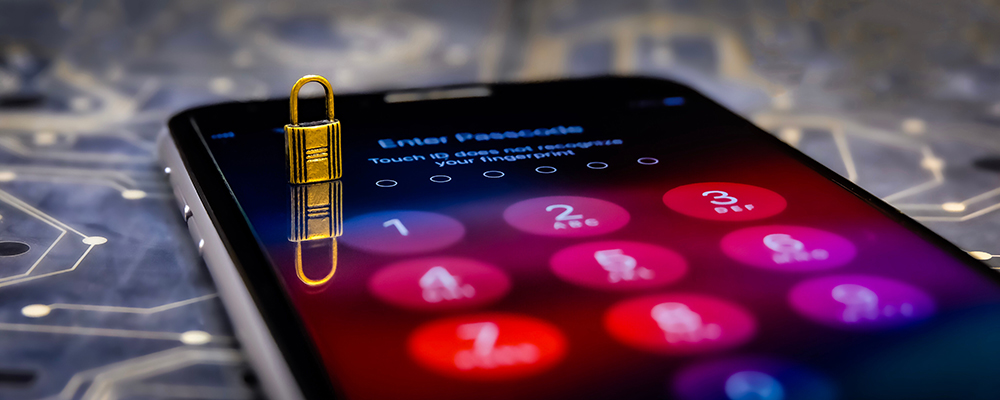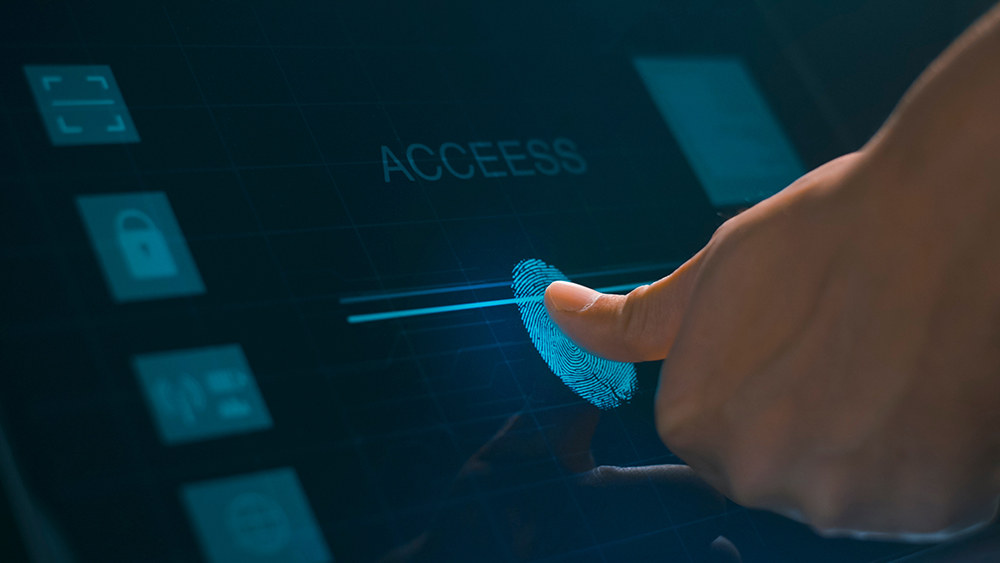We’ve talked about two-factor authentication before but haven’t spoken about multi-factor authentication yet. Multi-factor authentication involves adding an additional step to verify a person’s identity by logging in to a website or app. This means that if someone gets access to your username and password, they won’t also access any other information stored on your account because it requires another piece of information to complete the login process. Join us as we dig further than ever to find all the multi-factor authentication benefits known to man! Let’s start with the basics below:

Table of Contents
What Is Multi-Factor Authentication?
Multi-factor authentication is when a user has to provide multiple pieces of information to log in to an account. The most common form of multi-factor authentication is called “something you know,” like a password or PIN code, followed by “something you have,” such as a token or mobile phone number. In addition to these two factors, a third factor can be known as “something you are.” For example, you could require a fingerprint scan to log in to your bank account. Other authentication factors may include voice recognition, eye scans, and location data.
Multi-Factor Authentication Benefits
The primary benefit of multi-factor authentication is its ability to prevent hackers from accessing your data. Hackers often try to access your account by stealing your username and password. If they manage to steal those credentials, they’ll need to use them to access other parts of your account. However, once they’re inside, they still don’t have access to anything sensitive unless they have access to the second factor required to log into your account.
MFA has become increasingly popular over the past few years. There are many reasons why businesses should consider implementing this method of authentication. Here are thirteen benefits of MFA.
1. Better User Experience
Users will appreciate having multiple ways to authenticate themselves. This means less time spent typing in long passwords and more time spent doing other important tasks.
2. More Secure Accounts
By limiting the number of user authentication attempts allowed per hour or day, hackers won’t be able to try too many times before being blocked. Users will feel safer knowing that an added layer of security is in place to keep their accounts safe and secure.
3. Fewer Phishing Scams
When attackers try to steal credentials through social engineering or phishing attacks, they usually target just 1 factor of authentication. If a user has both username/password and phone verification enabled, the attacker must compromise both factors before gaining access to the account.
4. Stronger Password Requirements
When users choose strong passwords, hackers find it harder to get into their accounts.
5. Improved Account Recovery Processes
If a user forgets their password, they’ll need to go through a recovery process, which includes receiving an authentication code instead of trying to reset it. That way, they don’t lose any data.
6. Increased Customer Satisfaction and Trust
Customers will feel better knowing that their accounts are safe. They won’t worry about forgetting their password because they know they can recover it.
7. Reduced Fraud Rates
Fraud rates are higher when users only use 1 type of authentication. By adding another layer of protection, fraudsters will be forced to work harder to access users’ accounts.
8. Reduces Costs
Implementing MFA doesn’t require additional hardware or software. It also reduces the costs associated with managing passwords.
9. Increases Employee Engagement
Employees will feel more engaged when they understand how to protect their accounts. They’ll want to do their part by choosing strong passwords and verifying their identities.
10. Improves Business Reputation
Businesses that offer MFA will appear more trustworthy than those that don’t. Hackers will be more likely to attack companies that don’t take security seriously.
11. Streamlines Mobile Transactions
Mobile apps can be challenging to set up. With MFA, you can add a login screen to your app. You won’t have to worry about setting up separate servers to handle mobile authentication.
12. Achieve Compliance
Many organizations must comply with specific regulations regarding the security of their customer information. MFA helps them meet these requirements.
13. Keeps Employees Safe
Some employees may be unaware of the risks of accessing sensitive company information. Implementing MFA will help ensure they’re kept out of harm’s way.
Primary Authentication Factors You Might Already Use
There are many different ways to implement multi-factor authentication. Examples include requiring a physical token, sending a text message, or allowing a user to enter a pin code via a mobile device. Each method has its own unique set of pros and cons. We’ll go over each type of multi-factor authentication below and explain why it works well for businesses.
Physical Security Token
Physical tokens are small devices that generate codes based on a secret key. They usually contain a microchip that generates random numbers and sends them back to the server, verifying them against the user’s secret code. These tokens are excellent for authenticating users who want to prove their identity without remembering a long string of characters.
Pros:
Easy to Implement – A physical token doesn’t require much setup time. You install the software on your servers and configure it to send a code every few minutes.
User Experience – Users enjoy interacting with the token instead of typing in a lengthy code.
Security – Physical tokens are generally considered secure since they’re easy to lose and difficult to replicate.
Cons:
Cost – Physical tokens cost money to create and maintain.
Password Storage – Since they’re designed to be portable, they’re easily lost or stolen.
Text Messages
Text messages work similarly to physical tokens but are sent through a cell phone network. This means that if someone steals your phone, they won’t access your account. Text messages also allow you to send codes to any number of phones simultaneously, making it easier to verify identities than physical tokens.
Pros:
No Cost – Unlike physical tokens, text messages aren’t expensive to create and maintain. All you need is a smartphone and an SMS gateway.
User Experience – Users love getting texts from companies because they feel like they’re receiving personalized communication.
Security – Text messages can be sent securely through a cellular network, meaning they’re harder to intercept than emails.
Cons:
None unless your phone gets lost or stolen.
Mobile Device Pin Codes
This method allows you to provide a PIN code to users when they sign up for an account. This simple feature requires a user to input a code generated by a device connected to their computer. Once they enter the correct code, they’re granted access to their account.
Pros:
Easily Verifiable – Users can check their email or call customer service to see if they’ve received a verification code. If they haven’t, they know something is wrong.
User Experience – Users don’t have to memorize a long string of characters to log into their accounts. Instead, they need to remember a four-digit code.
Security – Mobile device pin codes are hard to steal since they’re stored locally on the user’s device.
Cons:
Requires Setup Time – It takes a bit of effort to get everything set up correctly. For example, you’ll need to install software on your servers, configure it to generate codes, and ensure customers receive those codes via email.
Requires Password Management – Since mobile device pin codes are only available on phones, you’ll need to store the codes somewhere safe.
Email Addresses
Similar to mobile device pin codes, email addresses are short strings of characters that identify a user’s account. Users can use their email addresses to gain access to their accounts.
Pros:
Easy to Verify – Users can click a link in an email to verify their identity.
User Experience – People love getting emails from companies. They feel like they’re receiving personal communication.
Security – Spam filters and other security measures protect emails.
Cons:
Not Portable – Email addresses require users to have an active internet connection to log in.
Username/Password Combinations
The most basic form of authentication, username/password combinations, is easy to remember and convenient to use. However, they’re easily compromised. Hackers can look up usernames and user passwords in ” hashes ” databases and brute force them until they find the right combination. Even complex passwords won’t protect against these attacks.
Pros:
Simple – Username/Password combinations are pretty straightforward to use.
User Experience – People love logging in with their username and password.
Security – Strong password security is difficult to guess, and hackers can’t brute force them.
Cons:
Compromised – Even though we think our passwords are strong, there’s always a chance that someone could break into our accounts.
Security Question
A security question or secret question is a piece of information that only the user knows. Questions include the name of their first pet, where they were born, etc. These questions are meant to help prevent unauthorized access to an account.
Pros:
Easy To Use – Security questions are easy to answer.
User Experience – Users enjoy answering these questions because they’re fun.
Cons:
Compromised – A hacker may figure out answers to security questions.
Advanced Forms Of Authentication To Add To Your Arsenal
You also have the option of choosing between synchronous and asynchronous multi-factor authentication. Synchronous means that you must enter all three factors together, while asynchronous requires that you enter each factor separately. We recommend going with asynchronous multi-factor authentication, as it allows you to enter just your password.
When deciding which type of multi-factor authenticator to use, keep these points in mind:
SMS/Text Message Codes – These are the most common form of multi-factor authentication. Your phone number is required to verify your identity. The downside is that SMS/text message codes aren’t always secure. Hackers could intercept your texts and read your codes.
App-Based Codes – Similar to SMS/text message codes, except that they work through an application installed on your smartphone. This makes them slightly safer than SMS/text message codes because hackers won’t be able to intercept your codes. However, your codes are still vulnerable if your smartphone gets lost or stolen.
Biometric Authentication – Biometrics are unique identifiers like fingerprints, facial recognition, voice analysis, retinal scans, and iris scans. They’re tough to hack, making them the best way to protect your information. Unfortunately, they’re also expensive and time-consuming to set up.
Adaptive Multi-Factor Authentication – Adaptive multi-factor authentication uses different forms based on how the user logs in. For example, when a user signs in from a new device, they need to provide a code sent via text message. If the same person tries to log in from another device, they’ll need a biometric scan.
Please note that none of these are perfect on their own, but if you implement the right combination of authenticators and layers of security, you’ll reduce the risk of having your accounts hacked.
The Bottom Line
These aren’t all of the multi-factor authentication benefits, but it’s a good chunk. Suppose you have security concerns, want stronger security, or want to improve your cybersecurity beyond single authenticator or two-step verification methods. In that case, implementing multi-factor authentication is an excellent step forward. Adding additional security is always a good idea. Fingerprint scanners, smart cards, biometric authentication scanners, and other forms of MFA can make it harder for hackers to break through your defenses. There are many different options available to you when it comes to adding these extra layers of security to your systems.





Recent Comments